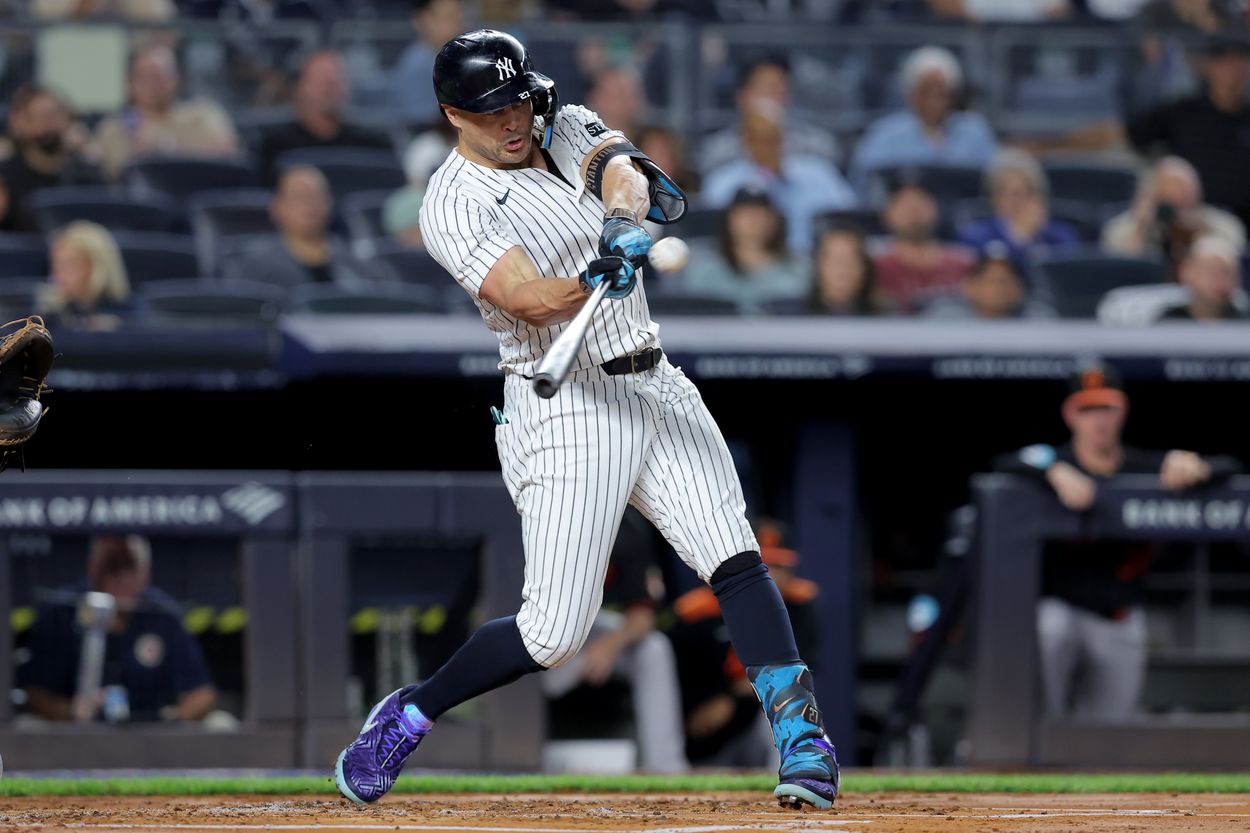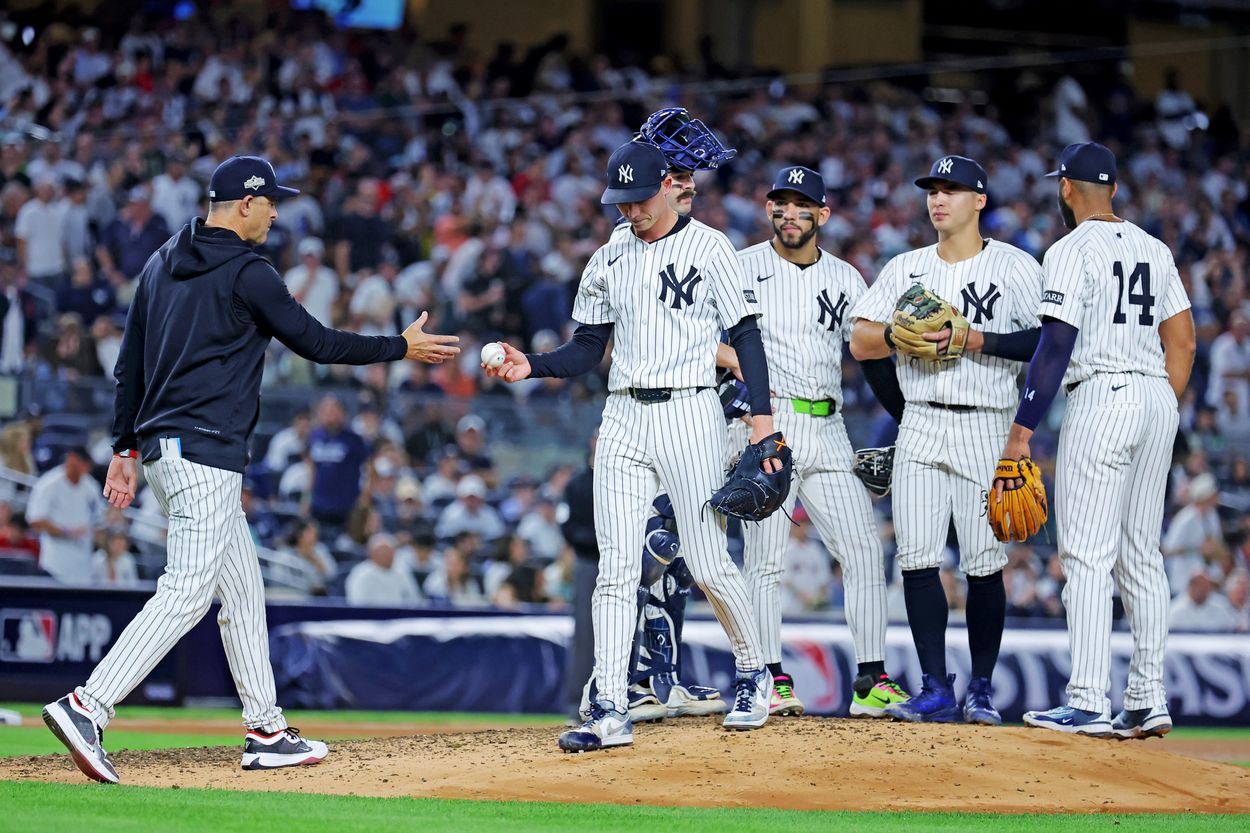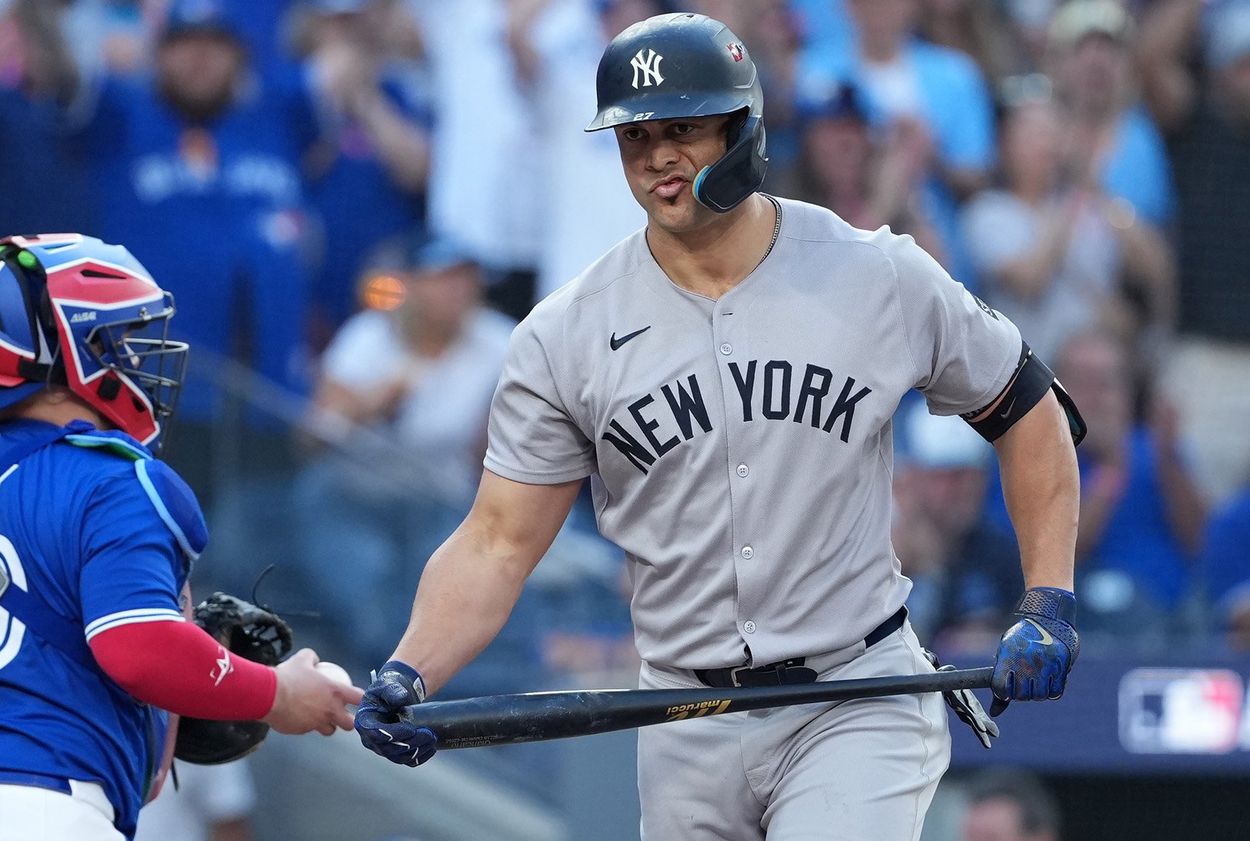
When the New York Yankees needed their star power the most, their offense simply vanished. Saturday night’s 10–1 blowout loss to the Toronto Blue Jays wasn’t just a defeat — it was a reality check. The Yankees looked flat, outpaced, and out-executed from start to finish, wasting early opportunities that could’ve shifted the game’s momentum before it unraveled.
For a team that came into the postseason riding a wave of confidence, this was the kind of performance that forces a second look in the mirror.

Missed chances and costly at-bats
Early on, the Yankees had the kind of golden opportunity that playoff teams dream about — bases loaded, nobody out, and Aaron Judge at the plate. But instead of a statement moment, it turned into a deflating strikeout. Judge chased a breaking ball far outside the zone, and the rally evaporated soon after.
That sequence set the tone for the night. Toronto’s pitching staff took full advantage of New York’s impatience at the plate, inducing weak contact and racking up easy outs. The Yankees went just 1-for-7 with runners in scoring position, leaving six men stranded.
And while Judge’s early struggles in that key moment stood out, he’s been one of the few consistent hitters in the postseason, slashing .400 and continuing to be the engine of the lineup. The real issue lies behind him — and it starts with Giancarlo Stanton.
Stanton’s postseason slump deepens
Stanton’s postseason woes have become impossible to ignore. Through the first few games, he’s hitting just .067/.125/.133 — numbers that barely resemble the hitter who powered through opposing rotations last October.
It’s a sharp contrast to his regular season, where he hit .273 with 24 home runs across 77 games, rediscovering his timing and showing flashes of his old dominance. But now, he looks lost — late on fastballs, guessing at offspeed pitches, and struggling to square anything up.
It’s a painful reminder of Stanton’s volatility. When he’s locked in, he’s capable of carrying a lineup by himself. But when his swing falls out of rhythm, the power vanishes completely, leaving the Yankees short one of their most dangerous weapons.

Ben Rice’s struggles compound the problem
First baseman Ben Rice, another key piece of the Yankees’ offensive puzzle, has gone cold at the worst possible time. After showing maturity beyond his years during the regular season, Rice has struggled to adjust to postseason pitching. His timing looks off, and his approach — once disciplined — now feels reactive.
Between Rice and Stanton’s combined slump, the Yankees have lost two of their best run-producing bats, putting even more pressure on Judge and Jazz Chisholm to shoulder the offensive load.
The next test: rookie pitcher Trey Yesavage
Sunday afternoon won’t bring any relief. The Blue Jays will send rookie right-hander Trey Yesavage to the mound — a 22-year-old with electric stuff and a splitter that has already drawn rave reviews. Yesavage posted a 3.21 ERA in a limited 14-inning sample this season, but the Yankees know better than to underestimate a young pitcher with confidence.
He’s been particularly tough on left-handed hitters, though his numbers against righties suggest some vulnerability — a sliver of hope for Judge and Stanton to find their footing.
The Yankees can’t afford another flat performance. October baseball has a way of exposing weaknesses, and right now, New York’s lineup looks like a collection of puzzle pieces that just don’t fit together.
For Stanton especially, this next game could be the spark — or the breaking point. The Yankees don’t just need his power; they need his presence. Because when he’s hitting, everything else seems to fall into place. And when he’s not, as Saturday proved, it all starts to unravel.
